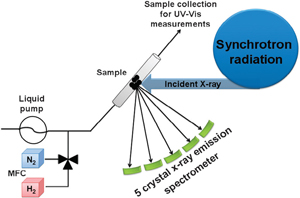This month sees the following articles in Catalysis Science and Technology that are in the top ten most accessed:-
Graphene-based materials for catalysis
Bruno F. Machado and Philippe Serp
Catal. Sci. Technol., 2012, 2, 54-75 DOI: 10.1039/C1CY00361E
Recent progress in the electrochemical conversion and utilization of CO2
Neil S. Spinner, Jose A. Vega and William E. Mustain
Catal. Sci. Technol., 2012, 2, 19-28 DOI: 10.1039/C1CY00314C
Challenge and progress: palladium-catalyzed sp3 C–H activation
Hu Li, Bi-Jie Li and Zhang-Jie Shi
Catal. Sci. Technol., 2011, 1, 191-206 DOI: 10.1039/C0CY00076K
Metal–organic frameworks for catalysis: the Knoevenagel reaction using zeolite imidazolate framework ZIF-9 as an efficient heterogeneous catalyst
Lien T. L. Nguyen, Ky K. A. Le, Hien X. Truong and Nam T. S. Phan
Catal. Sci. Technol., 2012, Advance Article DOI: 10.1039/C1CY00386K
Design of hierarchical zeolite catalysts by desilication
Danny Verboekend and Javier Pérez-Ramírez
Catal. Sci. Technol., 2011, 1, 879-890 DOI: 10.1039/C1CY00150G
Metal–organic frameworks as heterogeneous catalysts for oxidation reactions
Amarajothi Dhakshinamoorthy, Mercedes Alvaro and Hermenegildo Garcia
Catal. Sci. Technol., 2011, 1, 856-867 DOI: 10.1039/C1CY00068C
Highly efficient and selective reduction of nitroarenes with hydrazine over supported rhodium nanoparticles
Pingfei Luo, Kunling Xu, Rui Zhang, Lei Huang, Jun Wang, Weihong Xing and Jun Huang
Catal. Sci. Technol., 2012, 2, 301-304 DOI: 10.1039/C1CY00358E
Recent advances in organocatalytic asymmetric Michael reactions
Yong Zhang and Wei Wang
Catal. Sci. Technol., 2012, 2, 42-53 DOI: 10.1039/C1CY00334H
A magnetically recoverable γ-Fe2O3 nanocatalyst for the synthesis of 2-phenylquinazolines under solvent-free conditions
Narani Anand, Kannapu Hari Prasad Reddy, Tirumalasetty Satyanarayana, Kamaraju Seetha Rama Rao and David Raju Burri
Catal. Sci. Technol., 2011, Advance Article DOI: 10.1039/C1CY00341K
Shape-dependent catalytic activity of palladium nanocrystals for the oxidation of carbon monoxide
Rui Wang, Hong He, Li-Cheng Liu, Hong-Xing Dai and Zhen Zhao
Catal. Sci. Technol., 2012, Advance Article DOI: 10.1039/C2CY00417H
Why not take a look at the articles today and blog your thoughts and comments below.
Fancy submitting an article to Catalysis Science and Technology? Then why not submit to us today or alternatively email us your suggestions.
Comments Off on Top ten most accessed articles in December



















